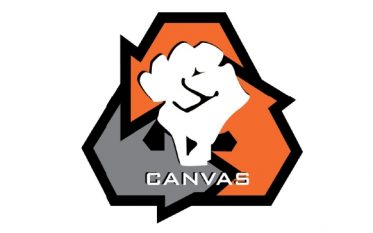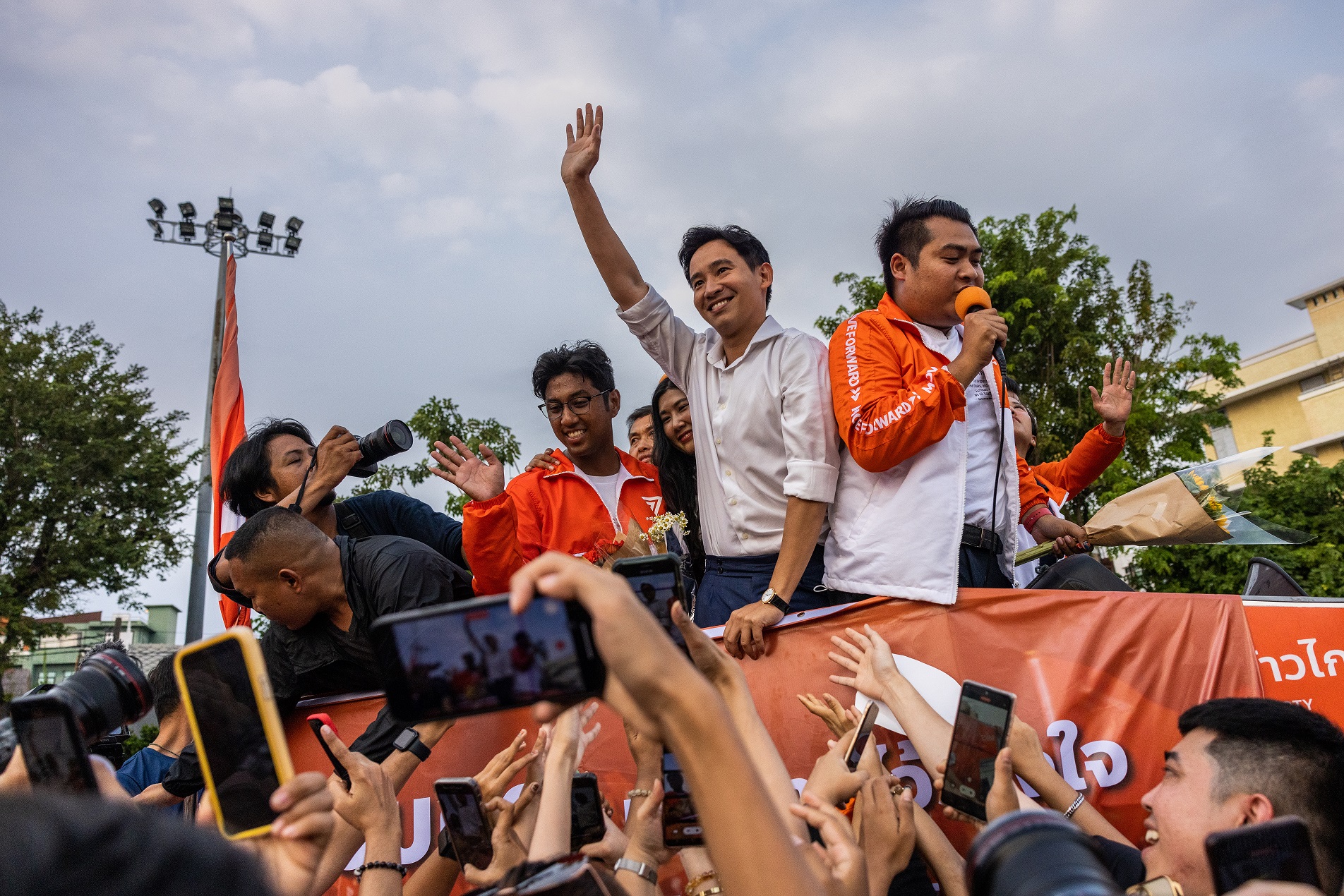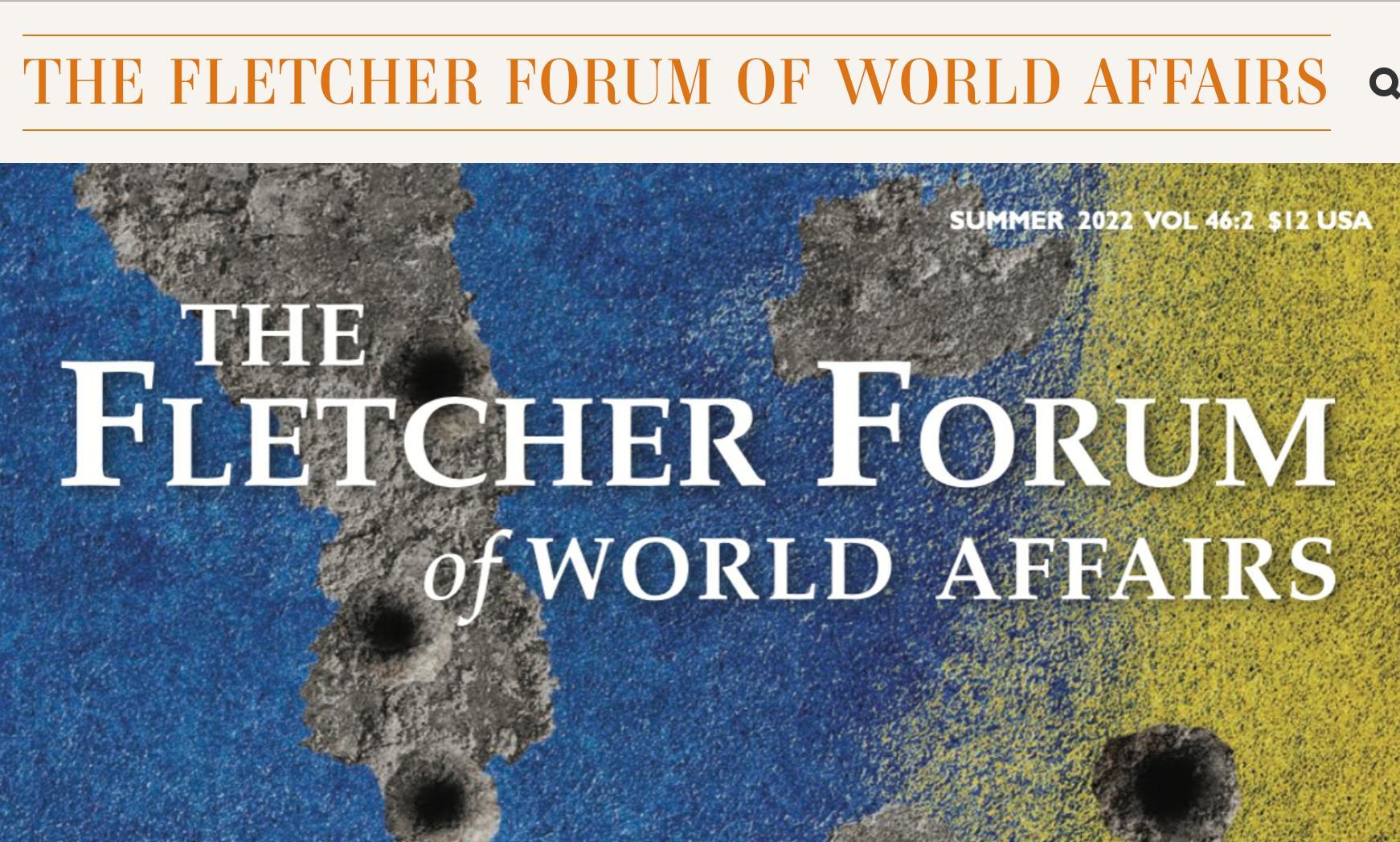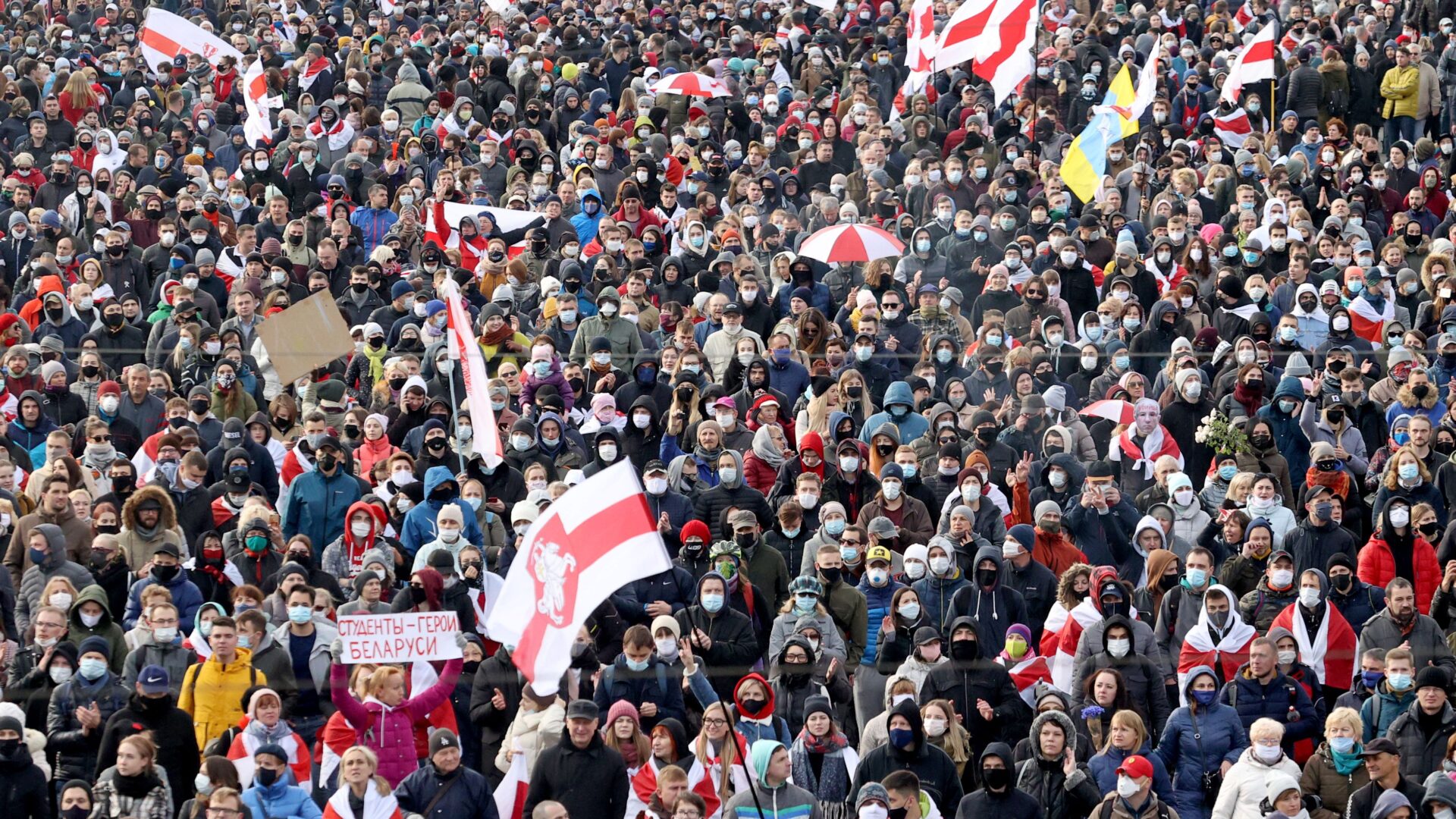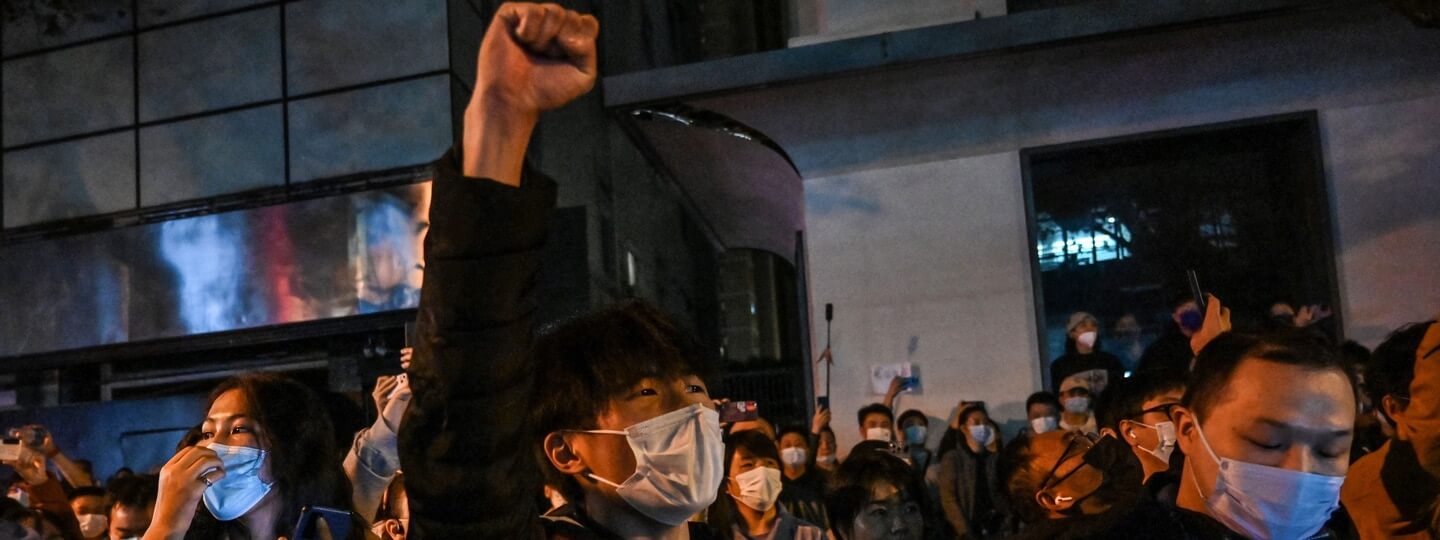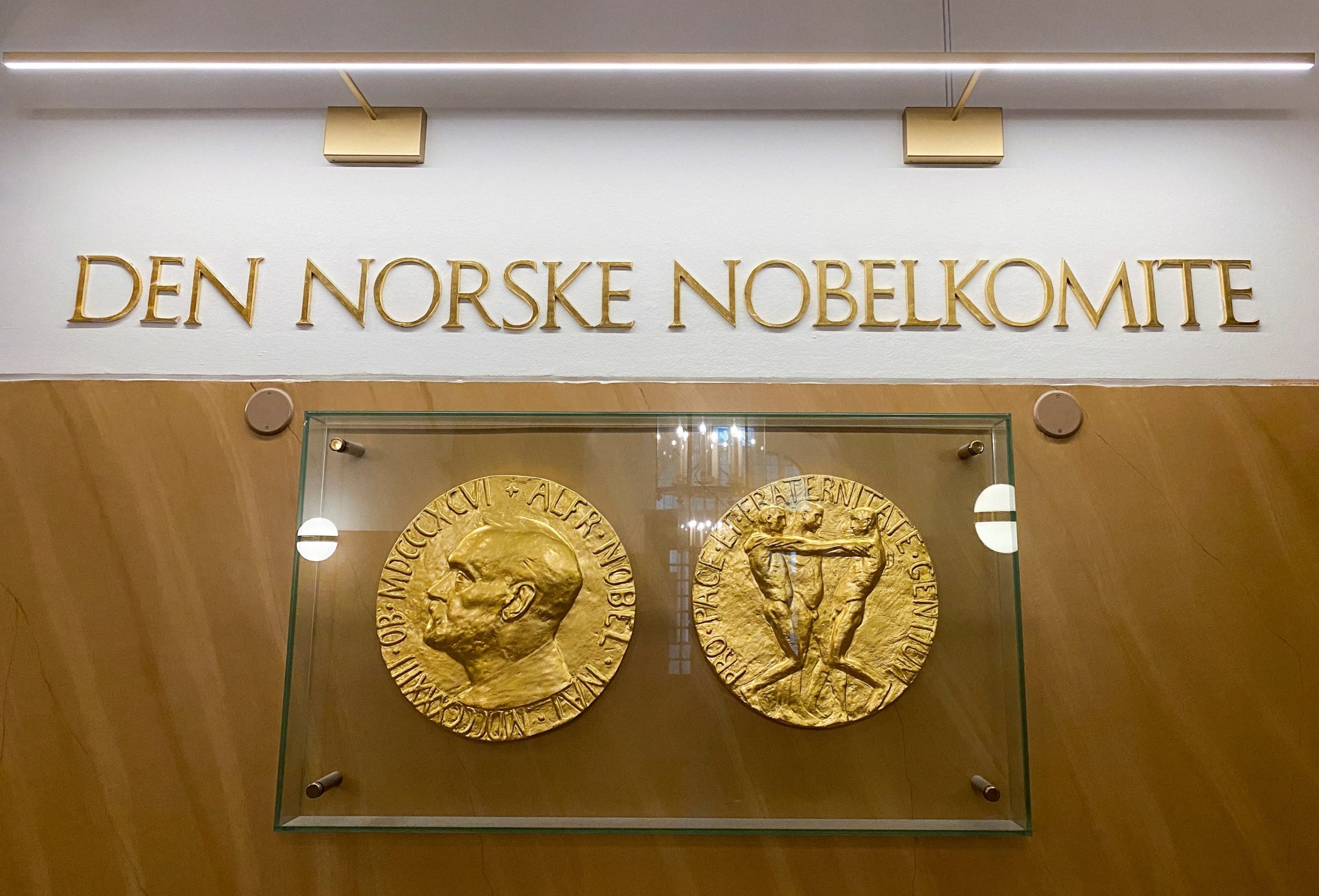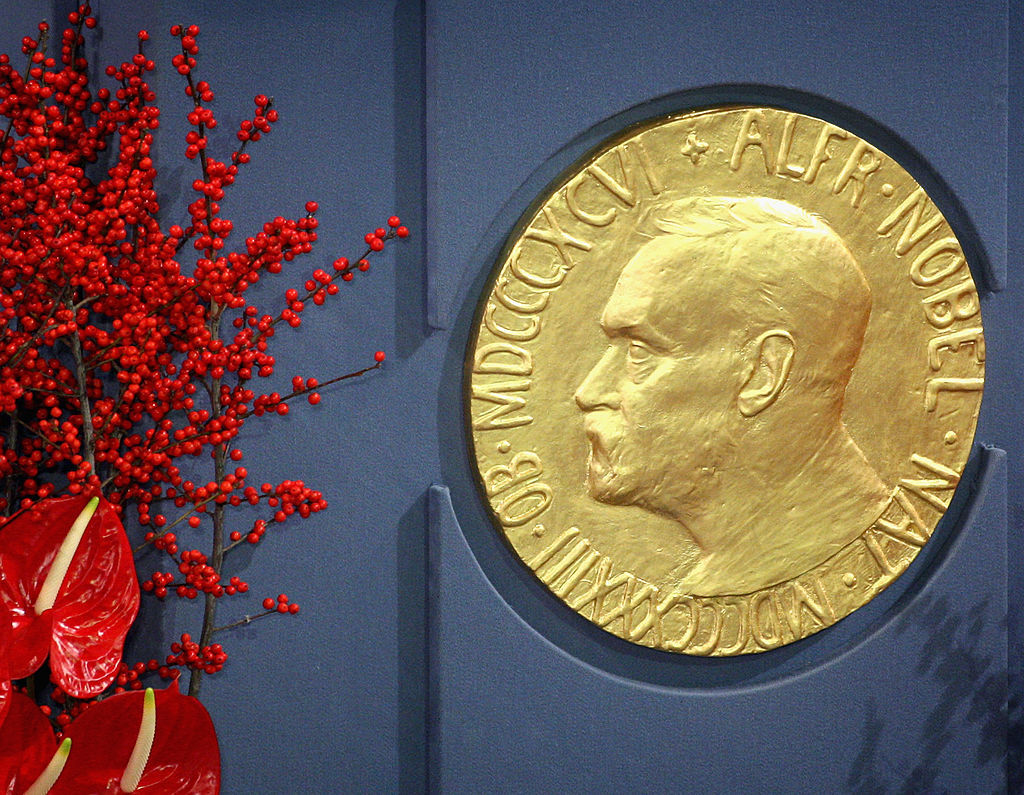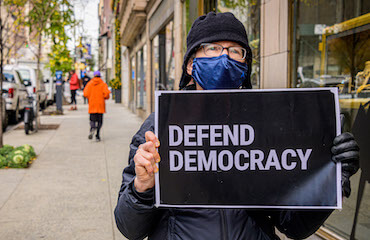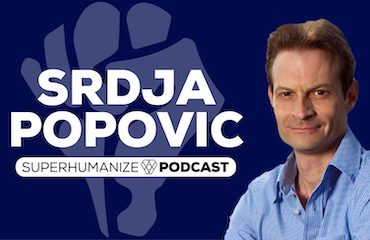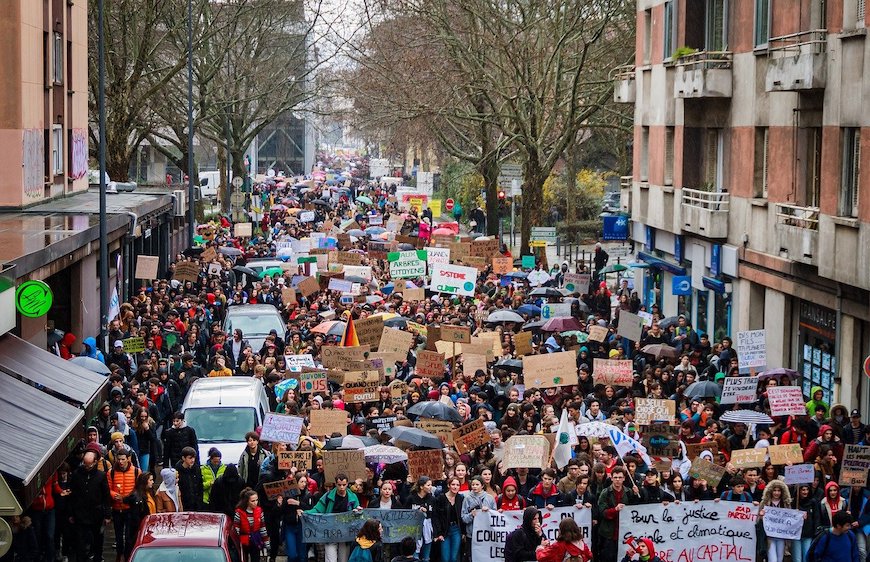The article was published in The Fletcher Forum of World Affairs, Summer 2022 edition:
Abstract
This essay addresses some of the challenges that nonviolent activist movements encounter when navigating non-state stakeholders, including violent groups and transnational corporations. It argues that as the more successful strategy to wage conflict, contemporary nonviolent movements track non-state stakeholders’ fluctuating loyalties and leverage methods of protest, boycott, civil disobedience, and noncooperation in order to secure small wins. The essay provides insight into two movements in Iraq and Myanmar and breaks down how each group engaged non-state stakeholders and used nonviolent tactics to garner support and enact meaningful democratic change.
INTRODUCTION
Since the end of the Cold War, power continues to be devolved from the state and into the hands of non-state stakeholders including militias, extremist groups, and international corporations. Some of the particularly violent stakeholders, such as those in Iraq, developed into extended and highly unaccountable arms of a military. In other scenarios, wealthy individuals and global corporations have scaled to compete with the state in monetary terms by leveraging their investments to influence geopolitics in their favor. Nonviolent activists know better than most that this dispersion of power has greatly altered the political landscape, and that non-state stakeholders must be skillfully navigated to guarantee victory.
This essay examines how nonviolent movements pivot their strategies to achieve democratic change and considers the rise of non-state stakeholders to positions of power. While subscribing to the core methods of strategic nonviolent struggle, the essay compares how movements in Iraq and Myanmar are utilizing non-state stakeholders’ newfound power to achieve positive change.
Part One provides context on the method of strategic nonviolent struggle and why, even in the face of violent repression, it is more likely to result in sustainable change compared to a violent strategy. Part Two discusses the challenge that movements face in navigating non-state stakeholders due to the nature of these actors’ loyalties. This section also compares how activists in Iraq and Myanmar tracked non-state stakeholder’s loyalties over time to identify ripe moments to secure wins for the cause. Despite a difference in context, this essay concludes that the scenarios in Iraq and Myanmar illustrate how a nonviolent approach that carefully navigates non-state stakeholders is the key to achieving democratic change—even in the face of unimaginable violence.
WHY NONVIOLENCE WORKS
The success of nonviolent resistance challenges conventional thinking, which assumes that political violence is the most effective way for a resistance campaign to challenge an adversary and achieve its goals. As a civilian-based method, strategic non-violence leverages social, psychological, economic, and political means to challenge an adversary without the threat or use of violence.[1] Hundreds of methods of nonviolent resistance—including economic boycotts, labor strikes, public protests, non-cooperation, and nonviolent intervention—have been recorded by scholars and are employed regularly to mass mobilize populaces as means to assert political pressure and delegitimize adversaries.[2]
History even favors nonviolence as the choice method of resistance over that of a violent strategy. According to The Nonviolent and Violent Conflicts Outcome (NAVCO) 1.3 Data Set (an initiative including comparative data on 622 global resistance campaigns between 1900 and 2019) movements that adopt a nonviolent strategy are successful 52 percent of the time.[3] The achievements of nonviolent movements starkly differ to violent resistance campaigns, which have so far only been successful 39 percent of the time.[4]
Still, some contemporary scholars and activists have argued that political violence is a legitimate tool that activists should employ, particularly in the face of repression.[5] Nevertheless, the strategic logic behind nonviolent resistance reaffirms the method’s superiority. Many who argue in favor of violent tactics have claimed that nonviolence is a “Western” technique and that those who advocate for its application fail to consider risks involved with the strategy.[6] Some also argue that using methods of unarmed violence, like launching Molotov cocktails or throwing rocks, is effective for achieving short-term change due to a lack of other mechanisms at a groups’ disposal, such as elections.[7] Other activists claim that they’ve found a balance in establishing fringe groups in their movement who successfully employ unarmed violence in tandem with nonviolent actions.[8]
While it may be possible that the adoption of unarmed violent tactics resulted in short-term change for some movements, there is little evidence to suggest that the use of these tactics is effective for enacting long-term democratization. This is because when a resistance movement adopts a violent strategy, they are challenging their adversary in an area where their adversary maintains the upper hand.[9]
Adversaries (whether they are a corporation, military, or extremist group) have wielded violence to uphold what Johan Galtung, a Norwegian sociologist, refers to as structural violence.[10] Unlike direct violence, which Galtung defines as the “physical harming [of] other humans with intention,” structural violence is the driving force behind social systems which prevent part of the population from meeting their basic needs, causing premature death as a result of exclusion, neglect, and poverty.[11] In modern societies, structural violence tends to manifest as institutionalized colonialism, racism, sexism, ethnocentrism, elitism, and nationalism. Galtung argues further that those stakeholders who benefit from structural violence rely on widespread direct violence, such as police violence or disinformation, to maintain their position of power.[12]
The theory of structural violence highlights a key reason for why adopting violence is unwise: a movement’s adversary has had many years of experience in using violence as a tool to stay in power. This means that in most scenarios, a movement’s adversaries will have an absolute advantage in a violent strategy from both a material and structural perspective.
WHAT ARE NON-STATE STAKEHOLDERS AND HOW DO WE CONCEPTUALIZE THEIR LOYALTIES?
Non-state stakeholders are entities that are not directly funded by the sitting government of the state from which they operate. In real terms, high net-wealth individuals, multinational corporations, non-governmental organizations, militias, and nonviolent movements are among some of the entities that fall under the category of “non-state stakeholders.” Some of the more powerful non-state stakeholders tend to operate with a large degree of impunity as they have superseded the authority of a sitting government.[13] While countries have combined their resources to develop a global system of justice through the establishment of entities like the United Nations or international courts, powerful non-state actors persistently subvert accountability for international crimes.[14] Groups operating with impunity can be highly problematic for nonviolent movements as they can lead to unchecked repression targeting activists or result in a non-state stakeholder becoming the lifeline of the movement’s adversary.[15]
In order to overcome the conundrum of non-state stakeholders, successful activists have broken down non-state stakeholders according to their loyalties and created campaigns that aim to shift some of those loyalties to the movement’s cause. Loyalty in this scenario may be thought of as both an emotion and a set of behaviors.[16] Similar to emotions like love or sorrow, individuals can be loyal to multiple things at once and their expression of loyalty manifests in myriad forms. An individual’s loyalty to something or someone may also shift radically if a superior alternative comes along.[17]
This approach for conceptualizing loyalty alignments is congruent with the logic of strategic nonviolent struggle. This approach humanizes the individuals within a non-state stakeholder by asking: “what are those individual people loyal to as it relates to being part of that non-state stakeholder and why?” Therefore, instead of approaching a non-state stakeholder as an institution, activists view them as a large group of individuals. Each of those individuals, a human, is loyal to a variety of things, such as their families, their religion and their job.[18] The goal for activists is to acknowledge these loyalties and present individuals that constitute the stakeholder with a beneficial alternative, such as gaining freedom of expression or earning more money.[19]
Navigating Non-state Stakeholders to Achieve Victory
To complement the theory, we will now examine two examples of nonviolent movements that successfully navigate non-state stakeholders. The first example in Iraq conveys the importance for movements to act on individual’s loyalties when the prospect of winning the support of an entire non-state stakeholder group is not possible. The latter example in Myanmar examines how a boycott and divestment campaign tracked several non-state stakeholders’ fluctuating loyalties to apply sustained pressure and eventually, win over their support. In both cases, activists were faced with a choice between adopting a nonviolent or violent strategy to achieve their goals; activists in both cases chose nonviolence in the face of violent adversaries and yielded victories for their causes.
Iraq:
Popular discontent over poor living standards, unemployment and insecurity had been simmering in Iraq’s Shia Muslim majority areas during summer 2019, including the capital city Baghdad and across the oil-rich southern governorates. It had been one of Iraq’s hottest summers and despite generous oil revenues, most low to middle income Iraqis lacked clean running water and a sustained source of electricity. The situation boiled over in September 2019 when security forces violently dispersed a peaceful student sit-in outside the Prime Minister’s office in Baghdad using a water cannon.[20] Coordinated demonstrations surged across the capital and in the south; protesters were met regularly with live ammunition by the country’s Hashd al-Shaabi formations, an umbrella of militias that were originally mobilized to combat ISIS.[21] Several of the Hashd’s more powerful militias are loyal to the Iranian Revolutionary Guard Force, both ideologically and monetarily, and have affiliations with Iraqi political parties.[22]
The coordination among activists grew more sophisticated as more took to the streets, particularly following the former Prime Minister Adel Abdil Mahdi’s decision to transfer a commander Abdel-Wahad al-Saadi from the elite Iraqi Counter Terror Service to the Defense Ministry.[23] Seen as one of Iraq’s core war heroes in the fight against ISIS, al-Saadi was celebrated, particularly among Shia young men. While his promotion was executed by Prime Minister Madhi, al-Saadi’s followers perceived his demotion as an act of political coercion stemming from the Hashd’s powerful pro-Iran militias, and thereby an act of foreign influence from the Islamic Revolutionary Guard Corps.[24]
Protest participation surged once more, as activists began occupying public squares in Baghdad and the southern governorate capitals. In Baghdad’s Tahrir Square, protesters developed methods to communicate their demands, including a newspaper publication known as “Tuk-tuk,” named in honor of the local motorized taxi drivers known for bravely transporting wounded demonstrators to hospitals.[25] The movement also broadened its membership, inviting Iraqi women to join its leadership ranks. Participation surged once more with numbers reaching up to 100,000 in Baghdad’s Tahrir Square as hundreds of women took to the streets.[26]
To challenge the Iranian-aligned militias’ loyalties and persuade them to join the cause, protesters focused on a commonality among the support base’s loyalties: national pride. The demands, though arguably vague, included a stop to all foreign intervention in Iraq, whether it be Iranian or Western, fresh elections and an end to the country’s “status quo” of corruption, high unemployment, sectarianism, and violence.[27]
Fringe groups using unarmed violent tactics popped up, particularly in the South. They burned down the Iranian consulate general in Najaf as crowds chanted “death to Khamenei,” the Iranian Grand Ayatollah.[28] Iranian-aligned militias reacted aggressively, employing indiscriminate live ammunition, and launched Iranian-supplied military-grade tear gas, killing over 500 protesters.[29] Between December 2019 and August 2020 the militias proactively kidnapped and assassinated activists, namely female activists, to condemn their participation.
As a reaction to the militias becoming more entrenched in their loyalties, Iraqi protesters began to focus on chipping away at the militia’s source of manpower by persuading young disenfranchised, unemployed men to join the cause instead of the militias’ ranks.[30] When threatened by powerful clerics over gender integration in the streets, protesters held hands in the square and covered public spaces with drawings of martyrs and Iraqi women resisting.[31] This strategy enabled activists to forgo focusing on pulling the militias to their side altogether and instead appealed to the loyalties of individual fighters or prospect fighters.
As the protests raged, the Iraqi parliament pushed through electoral reform legislation in late 2019, changing the system from a proportional system to a single non-transferrable system.[32] Though imperfect, the change allowed for voters to select individual candidates over party lists. The legislation also reserved a quarter of the total 251 seats for women.[33]Still, the protests pressed on, with corruption and foreign influence remaining. On February 11, 2021, activists demonstrated the true influence of their actions after the powerful Iraqi Shia Cleric Muqtada al-Sadr dissolved his “Blue Caps” militia. This was in response to protester demands over viral videos displaying the militia members killing dozens of protesters in Najaf to reopen roads.[34] The appetite to appease the movement reflected the protesters’ adjustment to appeal to Iraqi-aligned militia members’ loyalties to their country. In May 2021, the protesters’ campaigns over the Iranian militia’s kidnapping and assassination intimidation campaign also yielded a small win after the head of the Iranian aligned al-Anbar militia Qasim Muslin was arrested for playing a role in the death of two kidnapped activists.[35]
The movement’s true success shone through the parliamentary elections in fall 2021. The Iran-aligned militias’ Fatah Alliance lost ground in Parliament, relinquishing 31 seats. Meanwhile, Iraqi women- including two women representing the ethno-national minorities in Iraq, surpassed the established quota and won 97 seats.[36] Iran-aligned militias deemed the results as illegitimate and threatened to escalate their violence. Instead, the Iraqi Supreme Court ratified election results in December 2021.[37]
While the results may appear to be small victories, these extraordinary developments represent a
demotion in the militias’ power, a condemnation of their use of violence and an endorsement for the Iraqi state’s inclusion of women and minority groups. This progress was achieved as a result of the activist movement acknowledging that the Iranian militias’ loyalties were unlikely to shift in their favor. Instead, they made a conscious decision to appeal to the loyalties of young Iraqis and persuade them to join the nonviolent cause over the militias.
Myanmar:
On November 8, 2020, Myanmar’s National League for Democracy won a landslide victory in the national elections. The elections were a major step forward on the path to democratization.[38] Nevertheless, the Tatmadaw (Myanmar Armed Forces) declared the results as illegitimate on February 1, 2021, and launched a coup d’état against the elected government. Established activist groups, professional unions and civil servants quickly mobilized to form the “Civil Disobedience Movement” that aimed to garner broad support from across the country.[39] The goal was straightforward: to execute a national labor strike and bring the economy, and the Tatmadaw’s sources of financing, to a full stop.[40]
While the United States and its European counterparts began imposing economic sanctions on the Tatmadaw’s revenue streams, Myanmar’s liquified natural gas (LNG) industry remained untouched. Lobbying by companies with direct investments in the country, including the French oil and gas venture TotalEnergies (Total) and the US-owned Chevron Corporation (Chevron ensured smooth operations in the LNG sector).[41] The Civil Disobedience Movement recognized that by not sanctioning the LNG activities, the Tatmadaw would still maintain a strong source of revenue.[42]
The movement set about winning over non-state stakeholders’ support, convincing them to divest from the Myanmar LNG pipeline connecting the offshore Yadana Gas field to Thailand.[43] Activists mapped out Total and Chevron’s loyalties and deduced that profit and brand reputation were the critical assets that both companies were most loyal to. The Civil Disobedience Movement then worked with supporters abroad to develop the “Stop Buying Juna Business” boycott and divestment campaign, while also pulling both companies’ workers at the Yadana gas field into the nationwide labor strike on February 11, 2021.[44] LGN workers posted pictures from the offshore platforms calling on both companies to condemn Tatmadaw’s growing list of human rights violations against nonviolent protesters.[45] TotalEnergies promptly responded to the strike and calls to divest claiming that they would not stop producing gas on the Yadana Fields “in part to protect employees from those who might otherwise risk repercussions from the military junta.”[46]
Over the next 30 days, international pressure mounted as global news agencies, such as Reuters, published lists of foreign companies with direct ties to the Tatmadaw and acts of protest and civil disobedience which directly targeted these companies’ offices began to pop up.[47] In Washington D.C., American activists staged a demonstration outside of Chevron’s local office and took turns whacking a pinata adorned with a picture of the company’s primary lobbyist responsible for aggressively working to keep the US from sanctioning Myanmar’s energy industry.[48] This dilemma action targeted Chevron’s loyalty to its profit and identified the absurdity of its actions to protect that profit while directly funding the violent military junta. In May, an activist covered the façade of the national Myanmar Oil and Gas Enterprise’s headquarters with red paint, brandishing slogans demanding that Chevron and Total withdraw from the country, otherwise risking more Burmese blood being spilled.[49]
By the end of May 2021, sustained, albeit small scale protests, had popped up at numerous Chevron refineries in the US and at Total offices in Europe.[50] The campaign managed to impose enough upward political pressure on Chevron and Total that on May 27, 2021, the energy giants jointly suspended cash distributions derived from the Yadana gas venture to the Tatmadaw junta. The decision followed a joint vote by both companies’ shareholders.[51] The suspension marked an important step in the shift of the energy companies’ loyalties, as it signaled that they were unwilling to risk their reputation and potentially, their profit, if the boycott and divestment campaign grew stronger. With a combined 59.24 percent share in the offshore project, the act partially fulfilled The Civil Disobedience Movement’s goal to cut off financial support to the Tatmadaw.[52]
Amidst sustained nonviolent campaigns, including continued direct action targeting both companies, the energy giants halted all operations and withdrew from the Yadana gas venture on January 21, 2022, citing human rights abuses and a deteriorating rule of law as a direct result of Tatmadaw’s coup d’état.[53]
CONCLUSION
Non-state stakeholders, ranging from high net wealth individuals to violent extremist groups, will continue to emerge onto the political scene and challenge traditional sources of political power like standing governments, militaries, and international courts. The cases in Iraq and Myanmar demonstrate how those non-state stakeholders which manage to supersede a domestic government may act with high levels of impunity in using violence against civilians, or in maintaining business ventures that directly fund entities accused of committing war crimes. This shift in the political landscape presents a particularly complex challenge for nonviolent movements that aim to pull as many individuals as possible to their side because powerful non-state stakeholders exist outside of the system already attempting to democratize. For several movements, such as those in Iraq and Myanmar, tracking and appealing to individuals’ loyalties who collectively make up a non-state stakeholder has proven fruitful in realizing their goals.
Successfully tracking loyalties as a means to navigate the rise in non-state stakeholders will be critical for those movements seeking to enact meaningful change in constituencies especially where extremist groups have established viable alternatives to government systems. Despite their extremist ideologies, groups like Al-Shabaab in Somalia or the Islamic State-Khorasan in Afghanistan, are able to govern territories because they provide core services in the absence of the central government, such as security and clean water delivery. The populations they govern therefore, have accepted their ruling in order to survive. In other scenarios, such as Russia’s invasion in Ukraine, large-scale corporations’ boycott and divestment from those abusing human rights may prove to be a powerful tipping point in a movement’s ability to apply political pressure on its adversary. Activists’ ability to influence large-scale divestments may be achieved by appealing to the loyalties of the core decision makers within these corporate non-state stakeholders.
To work in parallel with activists’ strategy in appealing to loyalties, policy makers must meaningfully engage and endorse nonviolent movements as the legitimate voice of the people. Further, by applying economic sanctions on individuals within militias, extremist groups, or corporations who either monetarily support or directly repress nonviolent activism, the international community will aid in democratically diffusing power to the people.
[1] Erica Chenoweth and Maria J. Stephan, Why Civil Resistance Works, (New York, NY: Columbia University Press, 2014), 18.
[2] Gene Sharp, 198 Methods of Nonviolent Action, Albert Einstein Institution, 1973.
[3] Erica Chenoweth and Christopher Wiley Shay, List of Campaigns in NAVCO 1.3 – NAVCO Data Project, V1 (2020), distributed by Harvard Dataverse, https://doi.org/10.7910/DVN/ON9XND.
[4] Ibid.
[5] See: Brent Simpson, Robb Willer, and Matthew Feinberg, “Does Violent Protest Backfire? Testing a Theory of Public Reactions to Activist Violence,” Socius: Sociological Research for a Dynamic World 4 (January): 1-14.; Daniel Q Gillion, The Loud Minority : Why Protests Matter in American Democracy (Princeton: Princeton University Press, 2020).; Isaac Chotiner, “How Violent Protests Change Politics,” The New Yorker, May 29, 2020, https://www.newyorker.com/news/q-and-a/how-violent-protests-change-politics.; Tonya Mosley and Allison Hagan, “Violence As A Form Of Protest | Here & Now,” Wbur, June 11, 2020, https://www.wbur.org/hereandnow/2020/06/11/voilence-protests-racial-justice.; John Morreall, “The Justifiability of Violent Civil Disobedience,” Canadian Journal of Philosophy 6 (1) (March 1976): 35-47.
[6] Mosley and Hagan, “Violence As A Form Of Protest.””
[7] Interview with Hong Kongese activists, July 9, 2021.
[8] Austin Ramzy, “In Hong Kong, Unity Between Peaceful and Radical Protesters. For Now,” The New York Times, September 27, 2019, https://www.nytimes.com/2019/09/27/world/asia/hong-kong-protests-violence.html.
[9] Chenoweth and Stephan, Why Civil Resistance Works, 22–24.
[10] Johan Galtung, “Violence, Peace, and Peace Research,” Journal of Peace Research 6 (3) (1969): 175-179.
[11] Ibid.
[12] Galtung, “Violence, Peace, and Peace Research,” 183.
[13] Sabine C. Carey, Michael P. Colaresi, and Neil J. Mitchell, “Governments, Informal Links to Militias, and Accountability,” The Journal of Conflict Resolution 59 (5) (2015): 850-876; Stéfanie Khoury, “Corporate (Non-)Accountability and Human Rights,” Asian Journal of Social Science46 (4/5) (2018): 503-523.
[14] Ore Koren, “Means to an End: Pro-Government Militias as a Predictive Indicator of Strategic Mass Killing,” Conflict Management and Peace Science 34 (5) (2017): 461–84.; Khoury, “Corporate (Non-)Accountability,” 2018).
[15] For detailed examples in Iraq and Myanmar, see Marija Ristic, Ivan Angelovski, and Maja Zivanovic, “‘Epic’ Serbian Arms Deal Led to Pierced Skulls in Baghdad | Balkan Insight,” Balkan Insight, December 13, 2019, https://balkaninsight.com/2019/12/13/epic-serbian-arms-deal-led-to-pierced-skulls-in-baghdad/.; Manny Maung, “Myanmar Atrocities Show Need for International Action,” Human Rights Watch, December 15, 2018, https://www.hrw.org/news/2021/12/15/myanmar-atrocities-show-need-international-action.
[16] For theories on how loyalty is considered an emotion versus a behavior, see: James Connor, The Sociology of Loyalty, 9–34. (New York: Springer, 2007); Robert C. Solomon and Lori D Stone, “‘On “Positive” and “Negative” Emotions,’” Journal for the Theory of Social Behaviour 32 (4) (2002): 417–35; Jack Katz, How Emotions Work (Chicago: The University of Chicago Press, 1999).; Morton Grodzins, The Loyal and the Disloyal: Social Boundaries of Patriotism and Treason (Cleveland: Morton Books, 1956).
[17] Katz, How Emotions Work.; Connor, The Sociology of Loyalty.
[18] Connor, The Sociology of Loyalty, 222–24; Grodzins, The Loyal and the Disloyal, 82–86.
[19] Chenoweth and Stephan, Why Civil Resistance Works.
[20] “In Baghdad, All Bridges Lead to Revolution,” Al-Wasat, November 7, 2019, http://alwasat.ly/news/arabic/263236.
[21] “The Popular Mobilization Forces Admit to Shooting Protesters on the Night of the ‘al-Khilani Massacre,’” Al-Quds, December 9, 2019, t.ly/q5BR.; “Protests Erupt in Iraq against the American Targeting of the ‘Hashd,’ Abdul-Mahdi Threatens to Review the Relationship with the International Coalition,” Al Jazeera, December 31, 2019, t.ly/IcF4.
[22] For an excellent overview of the Hashd al-Shaabi’s structure and operating model, see: The Hashd and Politics from Iraq’s Paramilitary Groups: The Challenge of Rebuilding a Functioning State, International Crisis Group, July 30, 2018.
[23] Mustafa Saadoun, “Iran’s Influence Seen in Transfer of Iraqi War Hero,” Al-Monitor, October 4, 2019, https://www.al-monitor.com/originals/2019/10/iraq-protests-abdul-wahab-al-saadi.html.
[24] Ibid.; Mizar Kamal, “A Women’s Revolution in the Iraqi Streets: We Will Win!” Daraj, October 30, 2019, https://daraj.com/23324/.
[25] “Iraqi Protesters’ Newspaper Aspires to Be a Means of Change,” Reuters, November 20, 2019, https://www.reuters.com/article/idARAL8N2802YD.
[26] Mass Al-Qaisi, “Women Become the Icon of Iraqi Protests,” Al-Ithtijaj, March 8, 2020, https://alihtijaj.com/view.php?cat=1140.; Kamal, “A Women’s Revolution”; Dr. Ilham Makki, “The October Demonstrations Are a Turning Point in the Iraqi Feminist Movement,” Women’s International League for Peace and Freedom, 2020, t.ly/hfus.
[27] Ibid.
[28] “The Protest Scene after Protesters Burn down the Iranian Consulate General in Najaf,” Enab Baladi, November 28, 2019, https://www.enabbaladi.net/archives/345572.
[29] Saadoun, “Iran’s Influence Seen.”
[30] Makki, “The October Demonstrations.”; Saadoun, “Iran’s Influence Seen.”
[31] Ibid.
[32] Iraqi Council of Representatives, Iraqi Parliament Elections Law (No. 9 of 2020), 2020, https://moj.gov.iq/upload/pdf/4603.pdf.
[33] Iraq’s Electoral Preparations and Processes- Report No.4, United Nations Assistance Mission for Iraq, December 10, 2020; “In a Remarkable Precedent, Women Make a Surprise Win in the Iraqi Elections,” Al-Jazeera, October 20, 2021, t.ly/2DeE.
[34] Muqtada Al-Sadr, Twitter post, February 11, 2020, https://twitter.com/Mu_AlSadr/status/1227247455818915840.
[35] “Iraq Arrests Commander in Iran-Backed PMU over Activist’s Murder,” Al-Arabiya, May 26, 2021, https://english.alarabiya.net/News/middle-east/2021/05/26/Iraq-arrests-chief-of-Iran-backed-PMU-over-attacks-on-base-hosting-US-force-Sources.
[36] “The Iraqi Federal Court’s Approval of the Election Results Removes Opacity in Iraqi Politics,” Iraqi News Agency, December 27, 2021, https://www.ina.iq/144833–.html.
[37] Ibid.
[38] Maung, “Myanmar Atrocities.”
[39] Victoria Milko, “How Are the Myanmar Protests Being Organized?” AP News, February 9, 2021, https://apnews.com/article/technology-aung-san-suu-kyi-myanmar-yangon-asia-pacific-026ad5eb9ad6920f0d0d5446e17e27c2.
[40] Ibid.
[41] Kenneth P. Vogel and Lara Jakes, “Chevron Lobbies to Head Off New Sanctions on Myanmar,” The New York Times, September 16, 2021, https://www.nytimes.com/2021/04/22/us/politics/chevron-myanmar-sanctions.html.; “403 Myanmar Civil Society Organizations to Patrick Pouyanne and Michael Wirth,” Progressive Voice Myanmar, April 20, 2021, https://progressivevoicemyanmar.org/2021/04/20/open-letter-to-total-and-chevron/.
[42] Ibid.
[43] Ibid.
[44] Amanda Battersby, “Oil Workers in Solidarity against Myanmar Coup | Upstream Online,” Upstream, March 11, 2021, https://www.upstreamonline.com/politics/oil-workers-in-solidarity-against-myanmar-coup/2-1-960420.
[45] Battersby, “Oil Workers in Solidarity.”; Reuters Staff, “Total Says Abandoning Myanmar Gas Field Would Hurt Workers, Cities,” Reuters, April 3, 2021, https://www.reuters.com/article/us-myanmar-politics-total-idUSKBN2BQ0OX.
[46] Reuters Staff, “Total Says Abandoning Myanmar Gas Field Would Hurt Workers, Cities,” Reuters, April 3, 2021, https://www.reuters.com/article/us-myanmar-politics-total-idUSKBN2BQ0OX.
[47] “Rights Groups Call on Total to Suspend Payments in Myanmar Operations,” Reuters, March 16, 2021, https://www.reuters.com/business/energy/rights-groups-call-total-suspend-payments-myanmar-operations-2021-03-16/; Thomas Conway to Michael K. Wirth, March 21, 2021, https://docs.google.com/document/d/1gJxc8edR_FidQaH1TJxIx6eMB1qvaMYLC9kKcVyEuxQ/edit.
[48] SomOfUs, IMG_7380, photograph, Flickr, April 16, 2021, https://www.flickr.com/photos/sumofus/albums/72157718943019609.
[49] “Rights Groups Call.”
[50] “Protesters Demand Chevron Suspend Payments to Myanmar Junta Ahead of Shareholder Meeting,” MyanmarNow, May 25, 2021, https://myanmar-now.org/en/news/protesters-demand-chevron-suspend-payments-to-myanmar-junta-ahead-of-shareholder-meeting.
[51] Agence France-Presse, “French Energy Company Suspends Payments to Myanmar Army,” Voice of America News, May 26, 2021, https://www.voanews.com/a/east-asia-pacific_french-energy-company-suspends-payments-myanmar-army/6206257.html.
[52] “Chevron, Total Energies Stopping Operations in Myanmar over Human Rights Abuses,” NPR, January 21, 2022, https://www.npr.org/2022/01/21/1074792462/chevron-total-myanmar-human-rights.
[53] Ibid.
